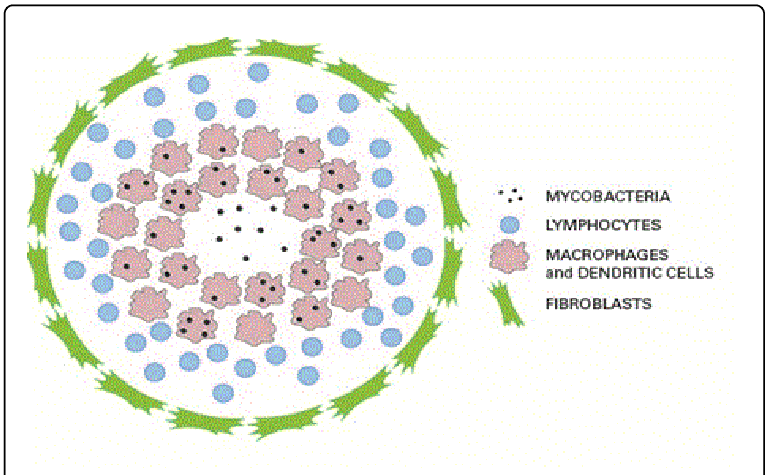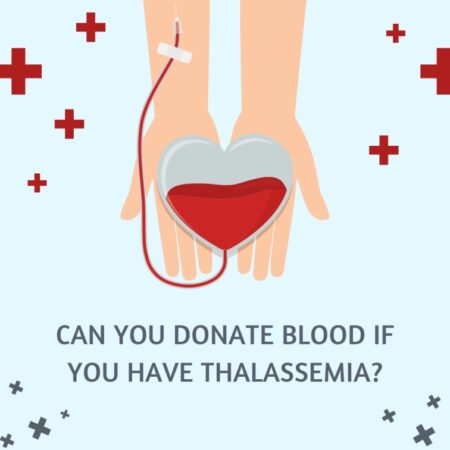Granulomatous inflammation is a specialized type of inflammation. It occurs when the usual chronic inflammation cannot get rid of the offending agent. it occurs when the usual chronic inflammatory response cannot get rid of the offending agent. A typical example is tuberculosis. Even though neutrophil plays the major role in acute inflammation Macrophage is the major cell type in chronic inflammation.
Table of Contents
What is macrophage?
macrophage is one of the major component of the mononuclear phagocyte system also known as the reticulo-endothelial system. Mononuclear phagocyte system is composed of closely related cell types including blood monocytes and tissue macrophages. Actually tissue macrophages are derived from blood monocytes when a monocyte migrates into a tissue from the blood it is transformed into a macrophage. This transformation is mediated by various chemicals including adhesion molecules and cytokines.
Macrophages are given different names in different tissues-
The liver macrophages are known as coupe fur cells in the spleen and lymph nodes. We have sinus histiocytes in the lungs.
The alveolar macrophages and in the central nervous system we have microglia.
The macrophage has to undergo activation in order to elicit at functions.
The macrophages can be activated by various types of stimuli including cytokines and gamma which is secreted by T lymphocytes.
Macrophage functions
The activated macrophage has major functions –
To eliminate the injurious agent
To initiate the repairing process for the elimination
They secrete reactive oxygen and nitrogen species proteases which digest a pathogen cytokines coagulation factors and arachidonic acid metabolites to initiate the repairing process
They secrete growth factors such as platelet derived growth factor fibroblast growth factor and transforming growth factor beta fiber genic cytokines which stimulate fibrosis angiogenic factors which cause angiogenesis and collagen remodelers.
The macrophage eliminates the injurious agent which can cause damage to the surrounding tissue due to the secretion of reactive oxygen and nitrogen species and proteases.
The tissue destruction is a characteristic feature in chronic inflammation an acute inflammation macrophages disappears soon. After the elimination of the injurious agent either by dying off or making their way into the lymphatics however in chronic inflammation macrophages tend to accumulate at the site of inflammation. This is due to the continuous recruitment of the macrophages from the blood local proliferation of the macrophages at the site of inflammation and immobilization of the macrophages. Immobilization is mainly due to the secretion of migration and efactor by the lymphocytes.
Granulomatous inflammation – Pathogenesis
Granulomatous inflammation occurs when the offending agent is resistant to be killed by the macrophages so the macrophages are stimulated to become epithelioid cells which have more microbial killing ability than macrophages. So granulomas is actually a collection of epithelioid cells surrounded by a rim of lymphocytes sometimes there may be multinucleated giant cells and fibroblasts as well in parasitic infections eosinophils also present in the granuloma multinucleated giant cells which are formed by the fusion of several epithelioid cells.

The two types of granulomas according to their pathogenesis foreign body:
granuloma and immune granuloma foreign body granulomas occur when the offending agent cannot be focused by a single macrophage usually occurs against materials such as talc suture material and other types of fibers. There is no immune response in foreign body granulomas the foreign agent can be identified at the center of the granuloma. Immune granulomas occur when the offending agent is poorly degradable. In this type of granulomas, macrophages engulf the bacterial antigens and process them and present them to the T lymphocytes. T lymphocytes in response secrete cytokines which help digest the foreign agent and activate other lymphocytes and they secrete more and more gamma which activates macrophages.
Different cell types in granulomatous inflammation
Epithelioid cells are derived from the activated tissue macrophages around the influent area. They have a pale eosinophils plasm dispersed chromatin due to the increased synthetic activity elongated nucleus which is a shape of a footprint less phagocytic ability than macrophages enhanced secretory ability and more microbial killing ability than macrophages. All the multinucleated giant cells are formed by the fusion of epithelioid cells. Lankans giant cells have their nuclei at the periphery of the cell resembling a horseshoe typically seen in tuberculosis. Foreign body type giant cells have randomly arranged nuclei. They usually occur in foreign body granulomas. Counting giant cells are formed by the union of foamy macrophages in fat necrotic tissues in the periphery of the cell. There are fat containing vacuoles and they push the nuclei towards the center of the cell .
There are three morphological patterns in granulomas in Cass eating granola Matta. The center of the granuloma undergoes caseous type of necrosis commonly seen in tuberculosis and non necrotizing grenouille mata. There is no center necrosis seen in sarcoidosis leprosy and Crohn’s disease and suppurative necrosis. The center shows separative necrosis with neutrophils (seen in cat-scratch disease), Fungal infections and rarely in tuberculosis.
Granulomatous Inflammation – Treatment
People with chronic granulomatous disease, or CGD, needs to take medications on a regular basis or as directed by the doctors.
The first thing that’s important is understanding why you take the medications and how they allow you to live your life and enjoy the things that your friends enjoy. Antibiotics are for bacterial infections. Patients with chronic granulomatous disease are susceptible to four types of bacteria:
Staphylococcus aureus, but really staphylococcal infections that are deep, like in your liver;
Nocardia can be found in forests, rotting leaves;
Burkholderia and Serratia are two other bacterial organisms to which patients with CGD are susceptible.
Bactrim covers all of those organisms and helps prevent infections. Bactrimis a combination of trimethoprim and sulfamethoxazole. Young children often have difficulty swallowing tablets, so Bactrim liquid are given to them. As child become older, they end up being switched over to pills, and those pills are taken twice a day.
Patients with CGD are susceptible to fungal infections, specifically Aspergillus. They’re also susceptible to other, more unusual fungi. Those are often found in wooded areas, rotting decaying matter, when people rake leaves. There are a variety of oral medications that patients can take to prevent fungal infections. Itraconazole and posaconazole really remain the mainstay antifungals that we’ll use.
Itraconazole is taken typically once a day.
Posaconazole tablet formation is once a day.
Voriconazole is twice a day.
This is used less because of side effects and the fact that it’s twice a day.
People with CGD also may take an injectable medication called interferon gamma to help their immune system fight infections. The original trials showed increase in infections in patients who were taking interferon gamma, and as a result we do recommend it for everybody. Not everyone is able to continue the interferon gamma. The injection itself doesn’t hurt; it isn’t painful. The side effects to interferon gamma can be flu-like symptoms–joint aches, bone aches, and fever. Often times, patients take the gamma interferon in the evening, so that most will sleep through the major side effects. Most of the time, after about a month of starting the gamma interferon, these side effects go away and people tolerate it quite well.
People with CGD also may be prescribed steroids. “By steroids, we mean taking prednisone, so not steroids that weightlifters or bodybuilders use, like anabolic steroids that will increase muscle mass. These are steroids that really target inflammation and decrease inflammation in a widespread way.” CGD is characterized by formation of granulomas, or masses of immune cells. Granulomas can obstruct the gastrointestinal and urinary tracts.
Also Read





